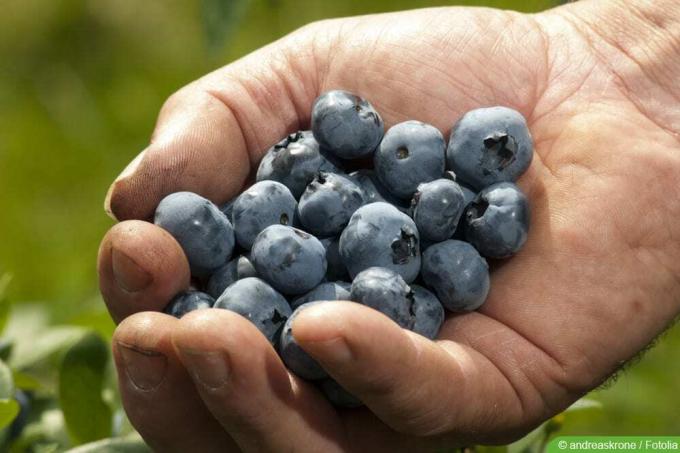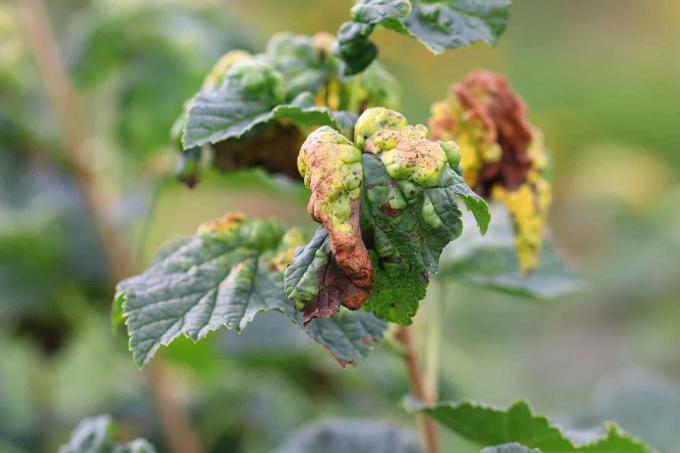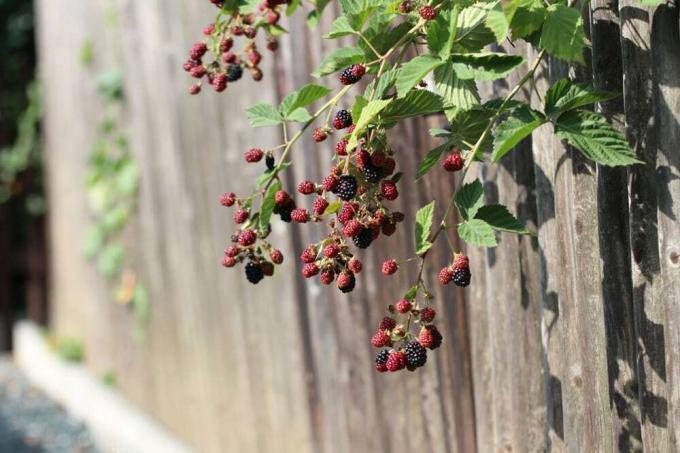

Table of contents
- sun exposure
- Floor
- water supply
- tub culture
Cultivated blueberries come from crossings with the American species "Vaccinium corymbosum". This species is mainly found in the humid north like around Minnesota or in the warm and also humid south of Florida.
sun exposure
The native form of the blueberry is mostly found in dense and shady forests. This is exactly what the cultivated blueberry does not appreciate at all. It loves the direct sun and with constant solar radiation it also produces significantly more aromatic fruits.

The location should have the following characteristics:
- as direct sun as possible – a maximum of a few hours of shade
- sheltered from the wind
- no cold drafts
Tip:
Blueberries are also suitable as an edible border for sunny terraces and can be planted in the ground or as a container plant.
Floor
Only in relation to the soil conditions there are hardly any differences between cultivated blueberries and the wild forms. The most important prerequisite for good yields are humus-rich soils. This can be a challenge, especially with new plantings, which is why you should not be afraid to use suitable commercially available substrates. Bog bed soil, for example, is ideal for cultivated blueberries if there are no suitable substrates for berry bushes.
The soil at the site should have the following characteristics:
- rich in humus
- relaxed
- permeable
- low in lime
- pH: 4.0 - 4.5
If the soil is too dense, you can loosen the substrate with sand before planting. Make sure that you do not use calcareous sand, but quartz sand, for example.
water supply
Although cultivated blueberries do not like waterlogging, they appreciate a constant supply of water. They are very sensitive to an interruption in the water supply. The amount of water they receive plays a rather subordinate role, what is most important is a constant water supply. In productive cultivation, the perennials are therefore regularly supplied with water either with sprinklers or via drip irrigation.

In the home garden, you should also make sure that the soil around the blueberries is constantly moist, but that there is no waterlogging. Cultivated blueberries even tolerate being watered from above. However, you should avoid watering the leaves and flowers during the flowering period, as this can deter pollinating insects. In addition, watering should be done from above in the morning or in the evening so that the leaves are not damaged by the sun.
Tip:
Ground cover can help prevent the soil around the blueberries from drying out as quickly. Alternatively, you can use a thick layer of sawdust as mulching material.
tub culture
Cultivated blueberries are also suitable for growing in pots. The location of the bucket should later be sunny again. The capacity for the substrate must be at least 50 liters. The substrate itself should be humus and you can use bog soil.
The bucket is only a special challenge in terms of water supply. On the one hand, the substrate must not dry out, on the other hand, there should be no waterlogging. Therefore, the bottom layer should be a drainage of sand and coarse gravel. Both sand and gravel should contain little or no lime.
A notice:
Also avoid calcareous water when watering and use rainwater, for example.
 Home editorial office
Home editorial office
Learn more about soft fruit

Leaf diseases on currants: leaf fall disease & Co
Diseases on the leaves are not uncommon in currants. They are triggered by fungi, viruses or various pests settle in. Many problems can be remedied with simple home remedies. Proper care also helps to prevent many diseases.

10 good neighbors of raspberries | mixed culture
Raspberries should grow healthily for several years and bring us a rich harvest every time. Choosing a good neighborhood helps to achieve this goal. But with whom does the berry plant like to share the bed and with whom not?

Honeyberry, Lonicera kamtschatica: 12 tips on location & care
In the local latitudes, the robust honeyberry can be cultivated and propagated well, as it does not make great demands on the site conditions and care measures. If you pay attention to certain factors when planting and cutting, you can already harvest sweet fruits in spring.

Blackberry location: 4 important criteria
Blackberries are a popular sweet fruit that is easy to care for. With a suitable location, plant health is guaranteed and the yield can be increased. The right location depends on the type of variety, because not every blackberry is insensitive to low temperatures.

Fighting lice on currants | 8 home remedies to get rid of aphids
When the first leaves appear on the currants in spring, there are often aphids on the bushes. The small insects are hidden under the leaves and can quickly cause a lot of damage. Therefore, lice should be combated at an early stage, ideally with natural home remedies.

Planting distance of strawberries, blackberries, raspberries & Co
Berries are the refreshing icing on the cake in the kitchen garden. With the right planting distance, you set the course for untroubled harvest pleasure in premium quality right from the planting stage. In this guide, you can read about the perfect planting distances in beds and balcony boxes for strawberries, blackberries, raspberries, etc.



